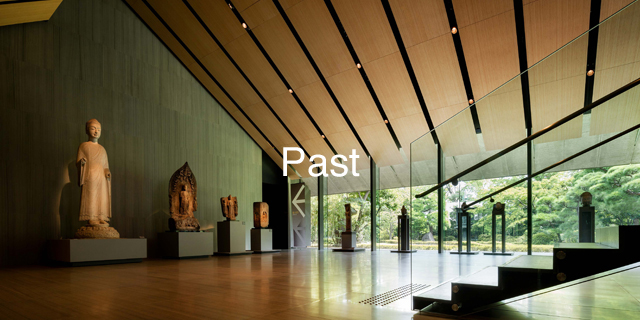
- Museum Collection Exhibition "Tea Containers and Tea Bowls: Through the Eyes of a Connoisseur" is cancelled to prevent further expansion of coronavirus (COVID-19) infection.
Museum Collection Exhibition
Tea Containers and Tea Bowls
Through the Eyes of a Connoisseur - Satuaday, May 30 - Sunday, July 12、2020
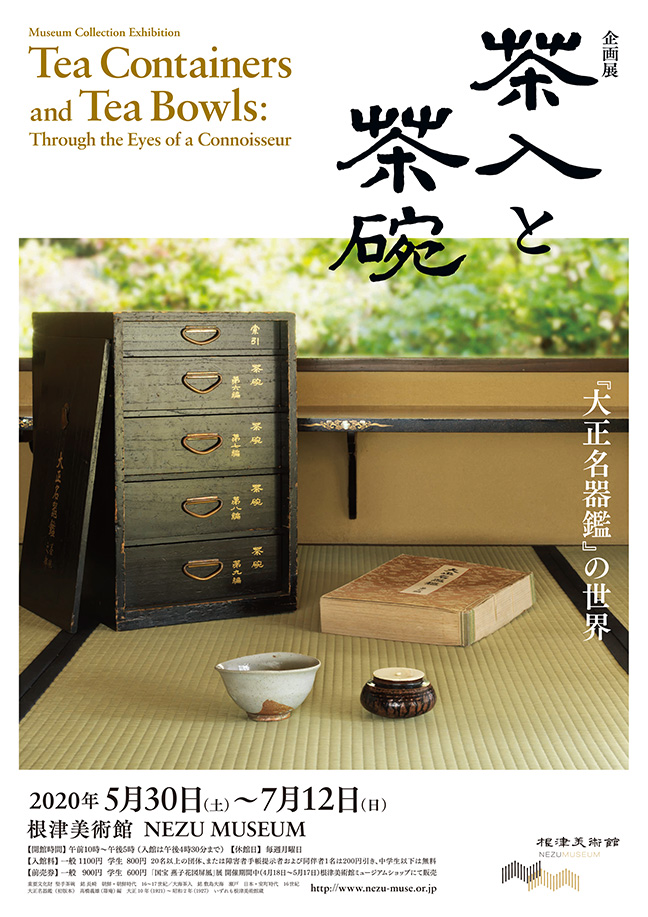
| Closed | Mondays |
|---|---|
| Hours | 10 a.m. - 5 p.m.(last entry: 4:30 p.m.) |
| General admission | Adult 1100 yen, Student 900 yen |
| Gallery | 1/2 |
Tea containers have long been treasured by tea afficianados. Tea bowls win great affection through being held in the hands. It is fair to say that tea containers and tea bowls are the most highly valued utensils in today’s world of tea. One of the reasons these two types of utensils are so highly regarded is the publication of a catalogue of illustrious tea utensils, the Taish Meikikan (Famed Tea Utensils of the Taishō Period [1912-1926], illustrated; nine titles in eleven volumes), which began in 1921. It presents 875 tea containers and tea bowls, with clear guidance on how they are to be appreciated. In this exhibition, the first section provides an overview of the process by which the Taisho Meikikan was realized, with a focus on tea containers and tea bowls from the museum collection. The second section presents materials attesting to the friendship between Takahashi Yoshio (tea name Sōan, 1861-1937), the compiler and editor of that series, and Nezu Kaichirō, Sr. (tea name Seizan, 1860-1940), who built the foundations of our museum’s collection.
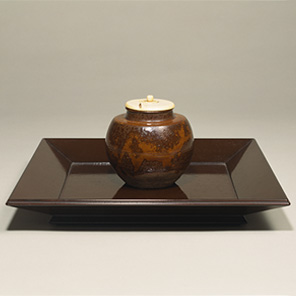

- Tea Container, named Matsuya (Formerly owned by Shimazu Tadashige)
-
Fuzhou ware group China Southern Song - Yuan dynasties, 13th-14th centuries
Nezu Museum - Chinese square-shouldered (katatsuki) style tea containers are the most highly valued. They were positioned at the head of the first volume of the Taisho Meikikan. Short containers with strongly curving bodies, such as this, are, however, rare, and nine pages in that volume were dedicated to addressing this long-acclaimed work.
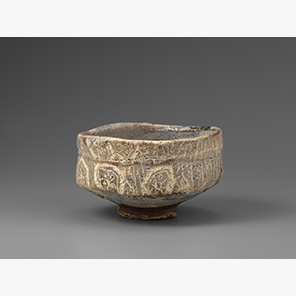

- Tea Bowl, named Yamanoha (Formerly owned by Nezu Kaichirō, Sr.)
-
Mino ware Japan Momoyama-Edo periods, 17th century
Nezu Museum - The distortion of its form and its bold motifs make this nezumi shino tea bowl from the Momoyama period (late sixteenth and early seventeenth centuries) particularly fascinating. On July 7, 1920, Sōan examined and photographed it at Kaichirō’s residence.
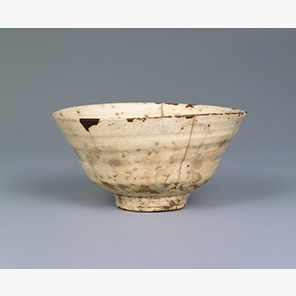

- Tea Bowl (Formerly owned by Sakai Tadamasa)
-
Amamori type Korea Chosǒn dynasty, 16th century
Nezu Museum - Thinly potted, with a gentle surface, this work is regarded as the ultimate example of the amamori tea bowl. (Amamori, “leaking rain,” refers to the bowl’s spots that resemble the result of rain leaking into walls.) When Taisho Meikikan was published, it was in the collection of the former daimyo of the Himeji domain (now Hyogo prefecture); later, Nezu Kaichirō acquired it.
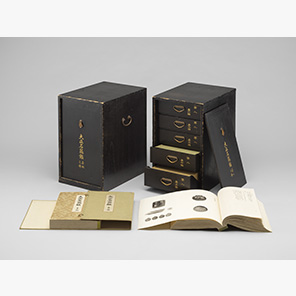
- Taisho Meikikan (1st edition)
-
Edited by Takahashi Yoshio (Sōan) Japan Tishō-Shōwa peridos, 1921-1927
Nezu Museum - The nine titles in eleven volumes, plus an index, were published over a five-year period, starting in 1921. The 400 copies of the first edition were enclosed in two lacquered wooden boxes with drawers. The bibliographical sources, photographs, and colored woodblock prints included are particularly noteworthy.
